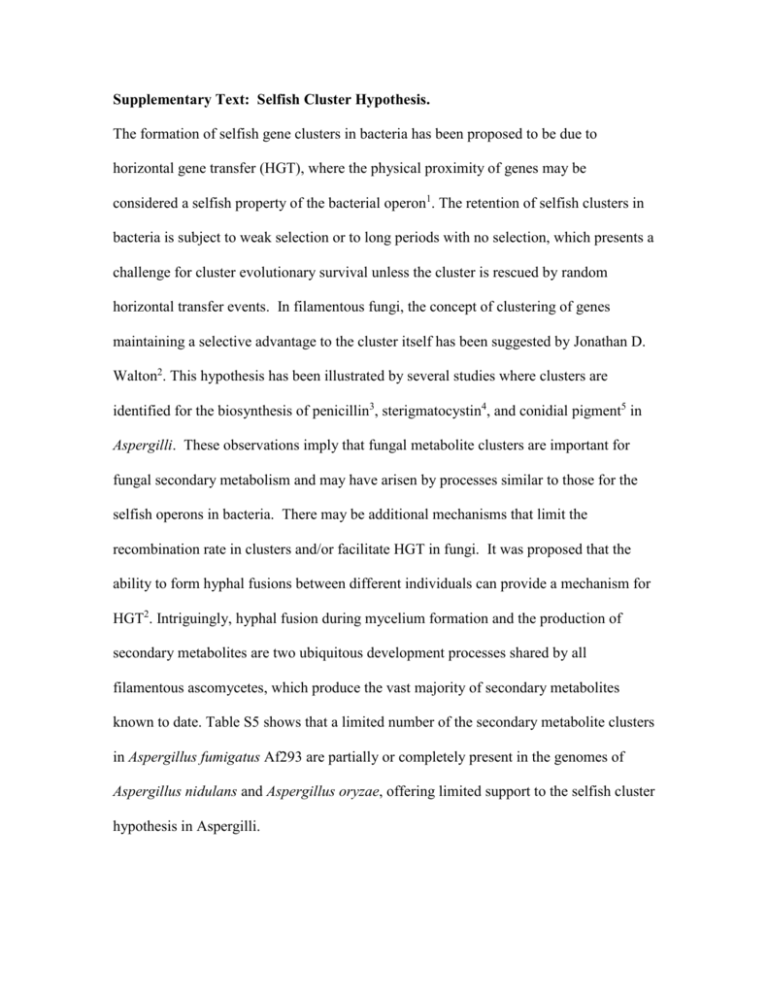Supplementary Data - Word file (46 KB )
advertisement

Supplementary Text: Selfish Cluster Hypothesis. The formation of selfish gene clusters in bacteria has been proposed to be due to horizontal gene transfer (HGT), where the physical proximity of genes may be considered a selfish property of the bacterial operon1. The retention of selfish clusters in bacteria is subject to weak selection or to long periods with no selection, which presents a challenge for cluster evolutionary survival unless the cluster is rescued by random horizontal transfer events. In filamentous fungi, the concept of clustering of genes maintaining a selective advantage to the cluster itself has been suggested by Jonathan D. Walton2. This hypothesis has been illustrated by several studies where clusters are identified for the biosynthesis of penicillin3, sterigmatocystin4, and conidial pigment5 in Aspergilli. These observations imply that fungal metabolite clusters are important for fungal secondary metabolism and may have arisen by processes similar to those for the selfish operons in bacteria. There may be additional mechanisms that limit the recombination rate in clusters and/or facilitate HGT in fungi. It was proposed that the ability to form hyphal fusions between different individuals can provide a mechanism for HGT2. Intriguingly, hyphal fusion during mycelium formation and the production of secondary metabolites are two ubiquitous development processes shared by all filamentous ascomycetes, which produce the vast majority of secondary metabolites known to date. Table S5 shows that a limited number of the secondary metabolite clusters in Aspergillus fumigatus Af293 are partially or completely present in the genomes of Aspergillus nidulans and Aspergillus oryzae, offering limited support to the selfish cluster hypothesis in Aspergilli. REFERENCES 1. 2. 3. 4. 5. Lawrence, J. G. & Roth, J. R. Selfish operons: horizontal transfer may drive the evolution of gene clusters. Genetics 143, 1843-60 (1996). Walton, J. D. Horizontal gene transfer and the evolution of secondary metabolite gene clusters in fungi: an hypothesis. Fungal Genet Biol 30, 167-71 (2000). Brakhage, A. A. Molecular regulation of beta-lactam biosynthesis in filamentous fungi. Microbiol Mol Biol Rev 62, 547-85 (1998). Calvo, A. M., Wilson, R. A., Bok, J. W. & Keller, N. P. Relationship between secondary metabolism and fungal development. Microbiol Mol Biol Rev 66, 44759, table of contents (2002). Tsai, H. F., Wheeler, M. H., Chang, Y. C. & Kwon-Chung, K. J. A developmentally regulated gene cluster involved in conidial pigment biosynthesis in Aspergillus fumigatus. J Bacteriol 181, 6469-77 (1999).








